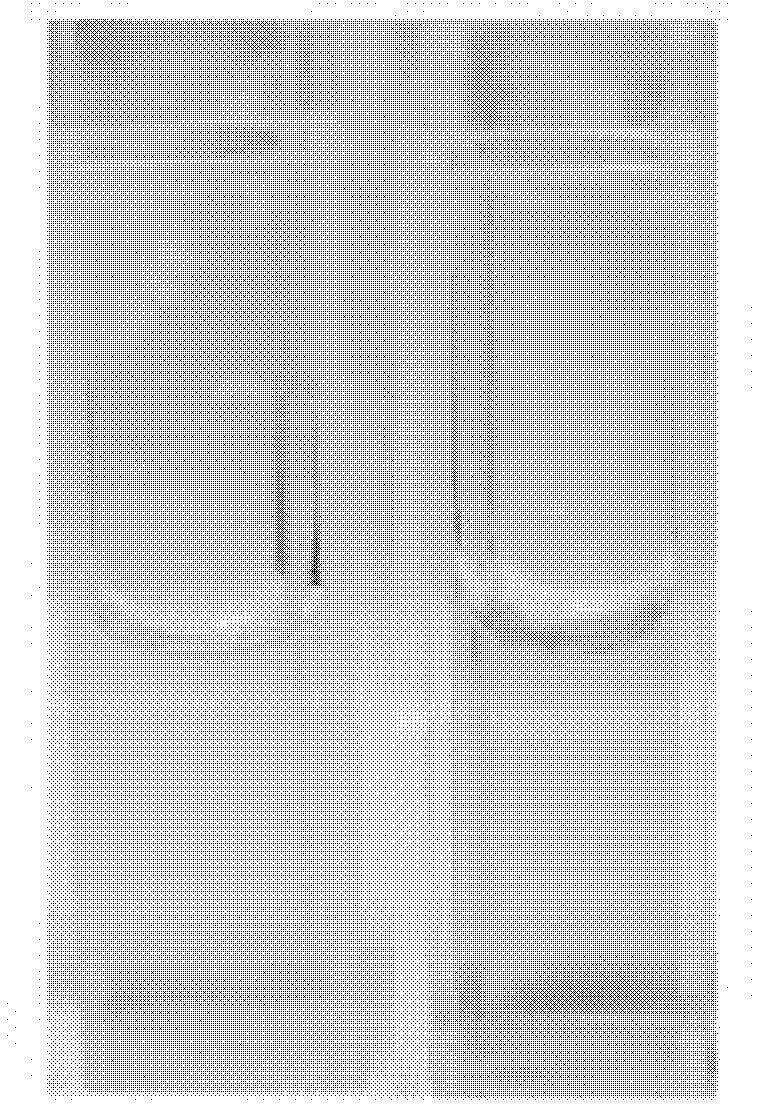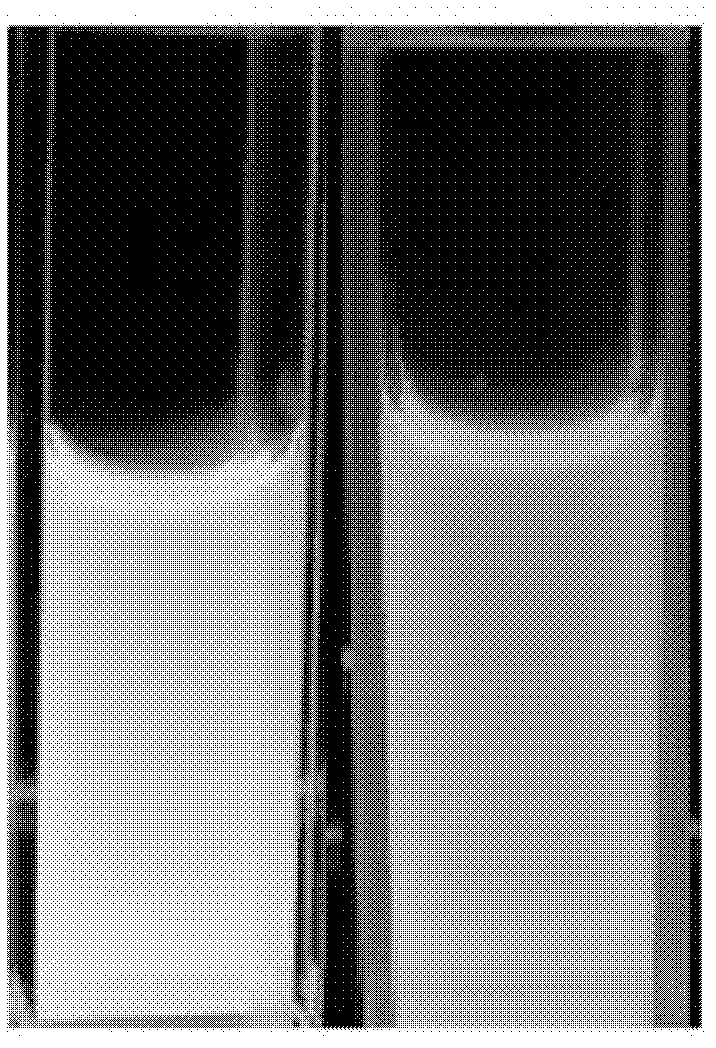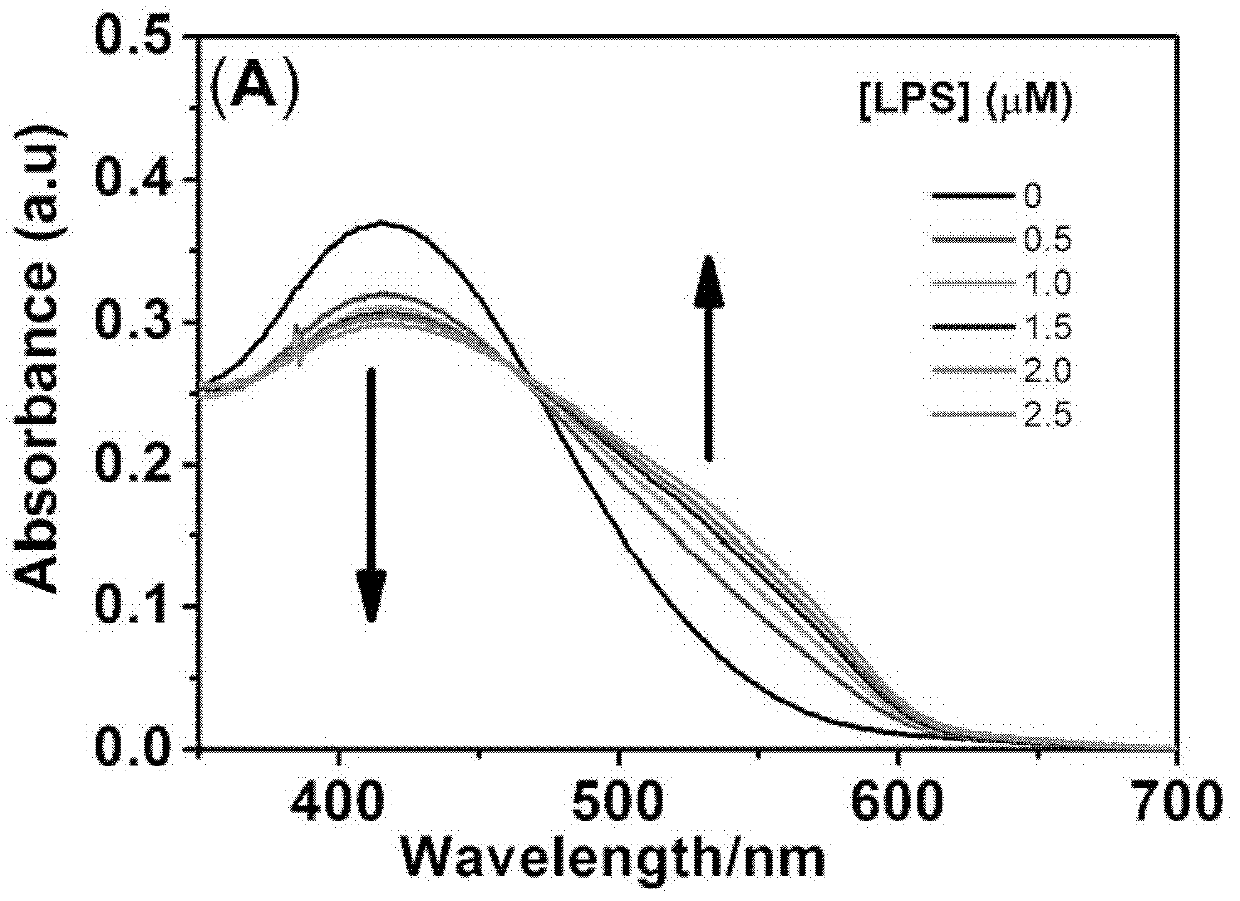Fluorescent colorimetric chemical-sensitive material as well as synthesis method and application thereof
A chemically sensitive, synthetic method technology, applied in the field of fluorescent colorimetric chemically sensitive materials and their synthesis, can solve the problems of poor solubility of the host compound, long response time, and high detection limit, and achieves short response time, simple synthesis method, and good choice. sexual effect
- Summary
- Abstract
- Description
- Claims
- Application Information
AI Technical Summary
Problems solved by technology
Method used
Image
Examples
Embodiment 1
[0068] A fluorescent colorimetric chemically sensitive material and its synthesis method and application:
[0069] Put 1 mole of compound T1-A, 2.5 moles of compound T2-A and 14 moles of anhydrous ferric chloride in a 100ml two-necked flask, add 50ml of anhydrous chloroform under nitrogen protection, and stir at room temperature After 48 hours, the solvent was dried under reduced pressure, a large amount of methanol was added to wash the precipitate and dried to obtain solid I. Gel permeation chromatography test molecular weight: 1.061e+5.
[0070] The molecular formulas of T1-A and T2-A are respectively:
[0071]
[0072] The compound I prepared in Example 1 was used as a fluorescent colorimetric chemically sensitive material to evaluate the response of the compound to lipopolysaccharide.
[0073] Add 25 μl, 0.2 mM LPS to 2 ml of 50 μM HEPES buffer solution of the compound I, such as figure 1 As shown in , the color of compound I solution changed from yellow to red befo...
Embodiment 2
[0080] A method for synthesizing a fluorescent colorimetric chemically sensitive material, comprising the following steps:
[0081] Put 1 mole of compound T1-A, 10 moles of compound T2-A and 44 moles of anhydrous ferric chloride in a 100ml two-necked flask, add 50ml of anhydrous chloroform under nitrogen protection, and stir at room temperature After 48 hours, the solvent was dried under reduced pressure, and a large amount of methanol was added to wash the precipitate and dried. Solid II was obtained. Gel permeation chromatography test molecular weight: 1.16e+5. The molecular formulas of T1-A and T2-A are the same as in Example 1, respectively.
[0082] The same concentration and the same amount of bacterial cultures of Proteus, Shigella, Streptococcus, and Dipneumococcus were added to the obtained saline solution of Compound II, and the changes in the ultraviolet absorption spectrum of Compound II before and after the addition of bacteria were observed. The spectra of Pro...
Embodiment 3
[0084] A method for synthesizing a fluorescent colorimetric chemically sensitive material, comprising the following steps:
[0085] Put 1 mole of compound T1-A, 40 moles of compound T2-A and 164 moles of anhydrous ferric chloride in a 100ml two-necked flask, add 50ml of anhydrous chloroform under nitrogen protection, and stir at room temperature After 48 hours, the solvent was dried under reduced pressure, and a large amount of methanol was added to wash the precipitate and dried. Solid III was obtained. Gel permeation chromatography test molecular weight: 1.33e+5.
[0086]The same concentration and the same amount of bacterial culture solution of Brucella, Legionella pneumophila, Bacillus anthracis, and Bacillus diphtheria were added respectively to the methanol and ethanol mixed organic solvent solution of compound III obtained, and the ultraviolet absorption spectrum of compound III was observed before and after adding bacteria It was found that the spectra of Brucella an...
PUM
 Login to View More
Login to View More Abstract
Description
Claims
Application Information
 Login to View More
Login to View More - R&D
- Intellectual Property
- Life Sciences
- Materials
- Tech Scout
- Unparalleled Data Quality
- Higher Quality Content
- 60% Fewer Hallucinations
Browse by: Latest US Patents, China's latest patents, Technical Efficacy Thesaurus, Application Domain, Technology Topic, Popular Technical Reports.
© 2025 PatSnap. All rights reserved.Legal|Privacy policy|Modern Slavery Act Transparency Statement|Sitemap|About US| Contact US: help@patsnap.com



